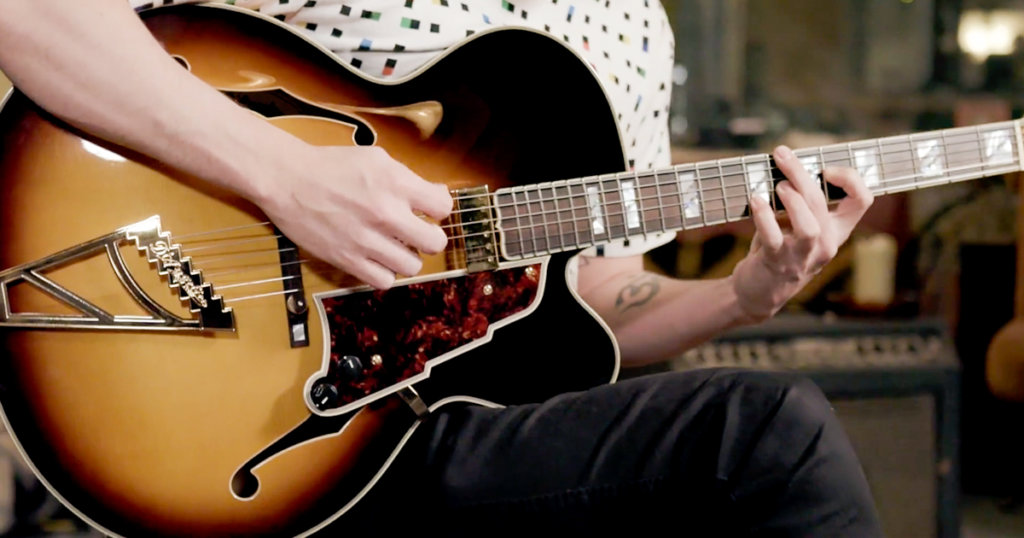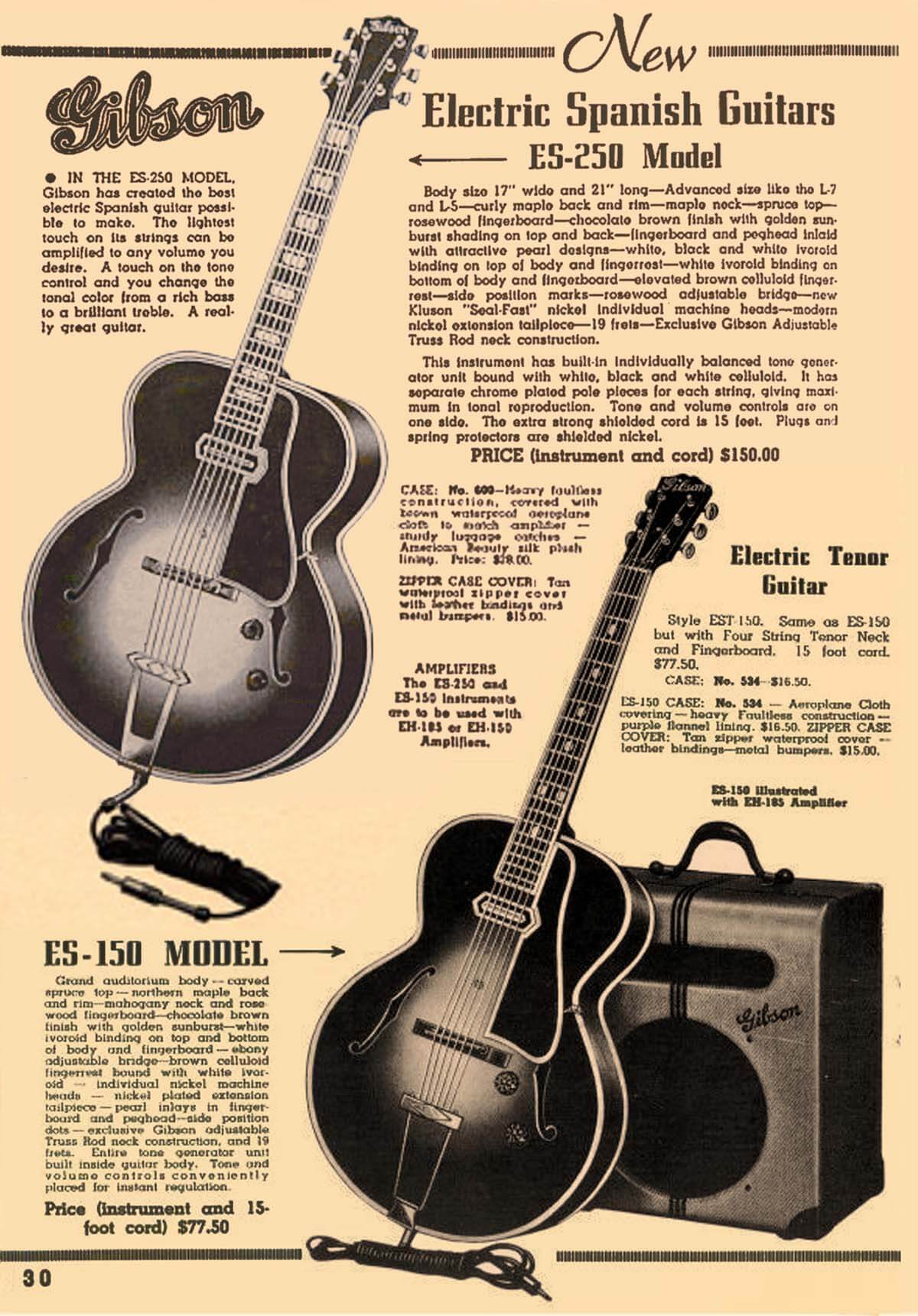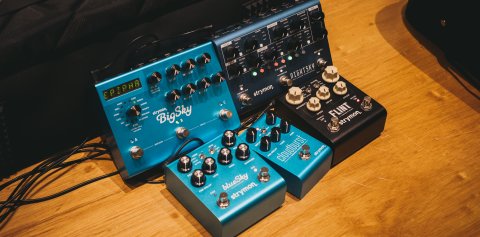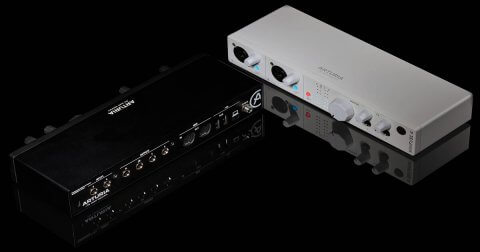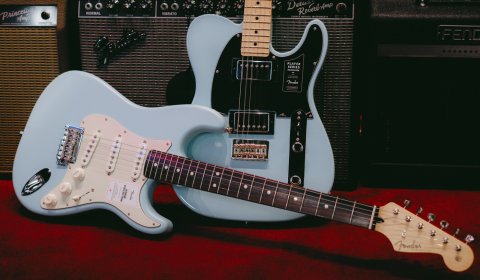Joe Pass, Chet Atkins, Kenny Burrel, Barney Kessel, Wes Montgomery, Scotty Moore. They all found their sounds and made their names with hollow bodied guitars. The big, warm, resonant sound produced by hollow bodied guitars is unmistakable, and its distinct characteristic is what draws many players to it. There is a big difference in sound between solid and hollow bodied guitars, and we dive into the sonic science behind these buxom beauties.
Semi-hollow or hollow body?
The first hollow body guitars were made in the 1930s in response to increasing demand for louder guitars in jazz bands and orchestras. Traditionally, hollow body guitars are known as archtops. They had a carved top with f-holes and a floating bridge. They were fully hollow – just like an acoustic guitar.
The first semi-hollow bodied guitars appeared in 1958 with Gibson’s iconic ES-335. It was much thinner, had a double cutaway, but most importantly – herein lies the main difference between semi-hollow and hollow bodies – it had a solid block of wood running through the middle of the guitar.
 The thinner body of a D’Angelico Deluxe DC Semi-Hollow guitar.
The thinner body of a D’Angelico Deluxe DC Semi-Hollow guitar.
The rise of the Jazz box
It’s the mid-30s and the heyday of big band jazz. Guitar players were ready to step out of the shadows and into the limelight. The need for more volume saw the first true hollow body electric born in 1936 – the Gibson ES-150. With a huge, heavy blade pickup, players could now cut through their bands and took center stage. Suddenly, they weren’t just confined to playing rhythm chords – the first hollow bodies were very much responsible for ushering in the age of the “lead” guitar.
That sound
Hollow bodies have incredible bottom end response. They sound – for lack of a better word – BIG. The mellow, woody tone of these guitars defined the jazz guitar sound, and set the stage for future blues, rockabilly and rock guitarists.
Guitars during this era were usually strung with heavy gauge strings for louder volume – 0.012” strings came standard, and flatwound strings were also common. Once electric amplification became the norm, players still stuck by these heavy strings which played a big part in the quintessential hollow body sound.
Negative feedback
One of the “flaws” of a hollow body can be unpleasant feedback caused by playing at higher volumes. Inside the body of the guitar, sound bounces along the walls of the guitar. When playing at louder volumes or with higher gain, the amplified sound can reach the insides of the guitar and gets picked up by the pickup. This perpetual loop is what causes the unpleasant feedback that makes everyone cover their ears – it’s like what happens when you put a microphone near the monitor on stage.
But to some, it’s a flaw to be embraced. Controlling feedback in a musical manner is somewhat of a dark art. In the right conditions – note choice, the spot you’re standing on stage – the guitar can produce a singing sustain that seemingly lasts forever.
The Legacy
Few guitars have had the staying power of hollow bodies. It’s been more than 80 years since their first introduction – and they are not going away anytime soon. Still relevant in today’s world of music, hollow body guitars are still sought after by touring musicians, hobby players and collectors.
While achieving volume isn’t a problem for modern guitarists, they still favour hollow body guitars for their unmistakable tone and feel. Athough technologies like digital effects and amp emulation pave the way for the future, nothing can truly replace the sound of an traditional hollow body guitar.
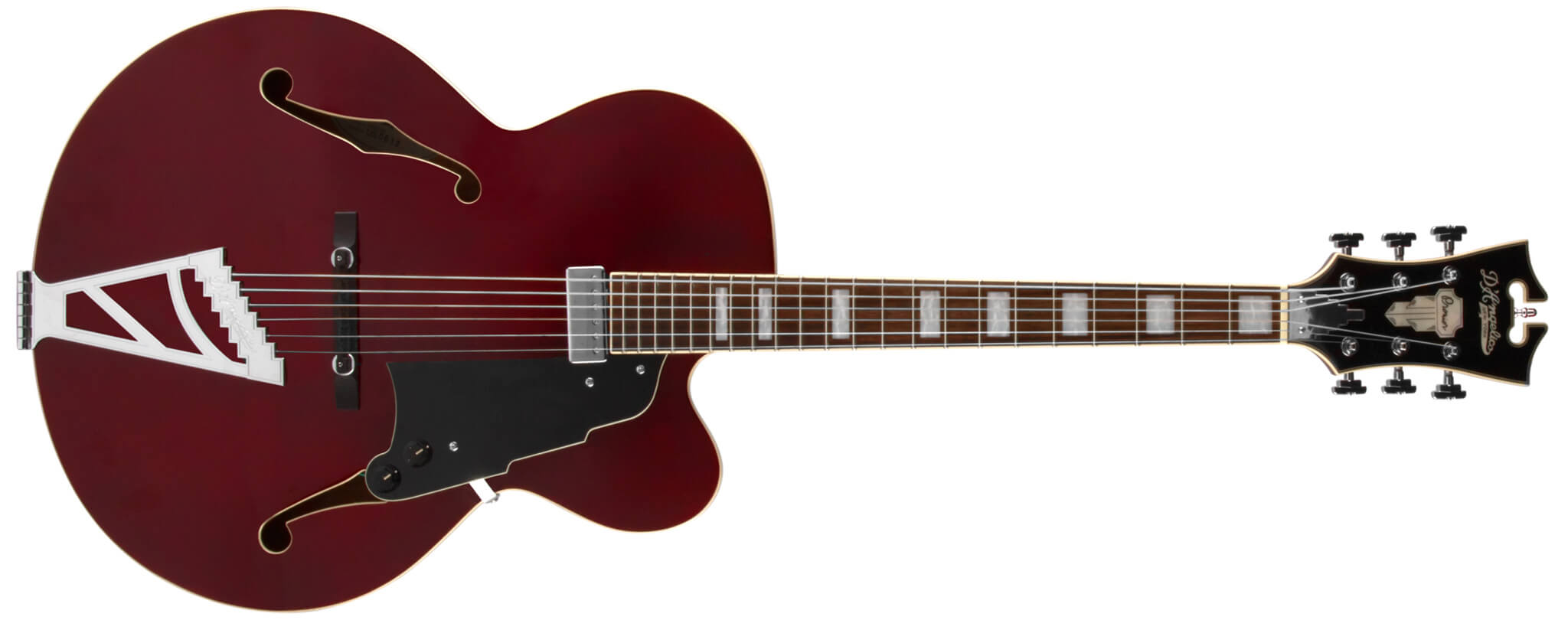
A D’Angelico Premier EXL-1 Hollow-Body guitar.
Well made hollow bodied guitars are a true labour of love, many of them built the same way they were a lifetime ago. Swee Lee stocks some of the finest hollow bodied guitars you will set your hands on. Head down to our flagship store at The Star Vista to give these beautiful instruments a try.
[the_ad id=”2782″][the_ad id=”2784″]
